Updated June 17, 2019 and August 8, 2021
No detail of the Votes for Women movement was overlooked! Women’s suffrage colors were selected to represent the values and goals of their hard work. The two most well-known suffrage movements, that of the United States and that of England were united in many ways but adopted their own colors that held great significance for both. Let’s take a look at what they were and how both countries used color in their movements.
England’s women’s suffrage colors
When the Women’s Social and Political Union (WSPU) in England was looking for a color scheme to distinguish their political movement, they chose purple, white, and green. Emmeline Pethick-Lawrence, editor of Votes for Women, a weekly newspaper, explained “Purple, as everyone knows is the royal colour, it stands for the royal blood that flows in the veins of every suffragette, the instinct of freedom and dignity… white stands for purity in private and public life… green is the colour of hope and the emblem of spring.” (The Colours of the Suffragettes)
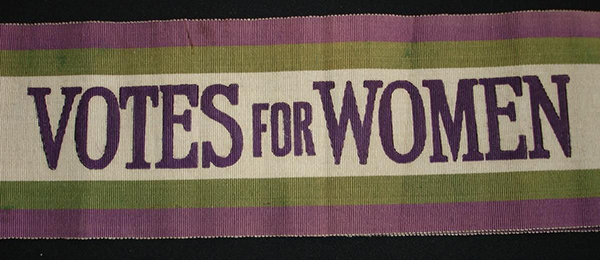
To deflect the impression of masculinity that was projected upon the women’s suffrage movement, women were encouraged to wear dresses in delicate fabrics and colors, with white often the color of choice. Sashes of purple and green were worn over the white dress.
Dresses and sashes were not the only way the colors of the women’s suffrage movement were incorporated into everyday life in England. Tri-color shoes and even tri-color underwear was sold. The Elswick bicycle for ladies (Elswick Cycle Company, Newcastle) was enameled in the WSPU colors. Brooches and badges supporting the movement were commissioned and sold. The Holloway Prison brooch was designed by Sylvia Pankhurst and awarded to WSPU members who were imprisoned. The broad arrow (symbol of conflict) contained the colors of the movement.
America’s women’s suffrage colors
In the United States, gold replaced green as a color representative of the women’s suffrage movement. The use of gold goes back to 1867 when Kansas was considering passage of a state suffrage referendum. Elizabeth Cady Stanton and Susan B. Anthony adopted the Kansas state flower, the sunflower, as a symbol of the suffrage cause. Soon, gold pins, ribbons, and sashes, as well as yellow roses became symbols of the cause.
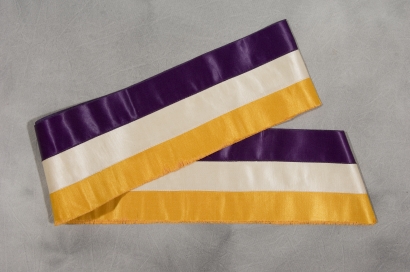
The Suffragist, Vol. 1 No. 4, published on December 6, 1913, describes the symbolism of the colors. “Purple is the color of loyalty, constancy to purpose, unswerving steadfastness to a cause. White, the emblem of purity, symbolizes the quality of our purpose; and gold, the color of light and life, is as the torch that guides our purpose, pure and unswerving.” Simplified, the tri-colors signified loyalty, purity, and life. (La Croix)
Jill Zahniser is an Alice Paul biographer and women’s suffrage historian. She contacted us about this blog on June 12, 2019, to offer the following to clarify the colors. We thank her for helping us present the best information possible for you!
“The largest group, NAWSA (National American Woman Suffrage Association), had no official colors, but gold was the most commonly used and later, once parades were utilized, white. The tricolor was used exclusively in this country by the Congressional Union/National Woman’s Party.
“White and gold are the only two colors which were historically employed by the whole of the suffrage movement, militant and mainstream.” (Zahniser)
Just like their British counterparts, American women were imprisoned during the fight for the right to vote. A “Jailed for Freedom” pin was presented to members of the National Woman’s Party who served prison sentences for picketing the White House in the cause of women’s suffrage. The pin was based on the Holloway Brooch.
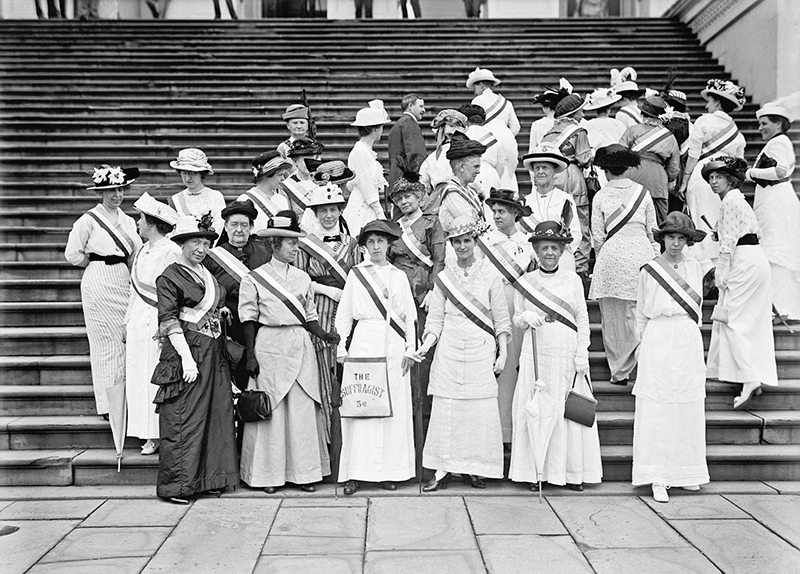
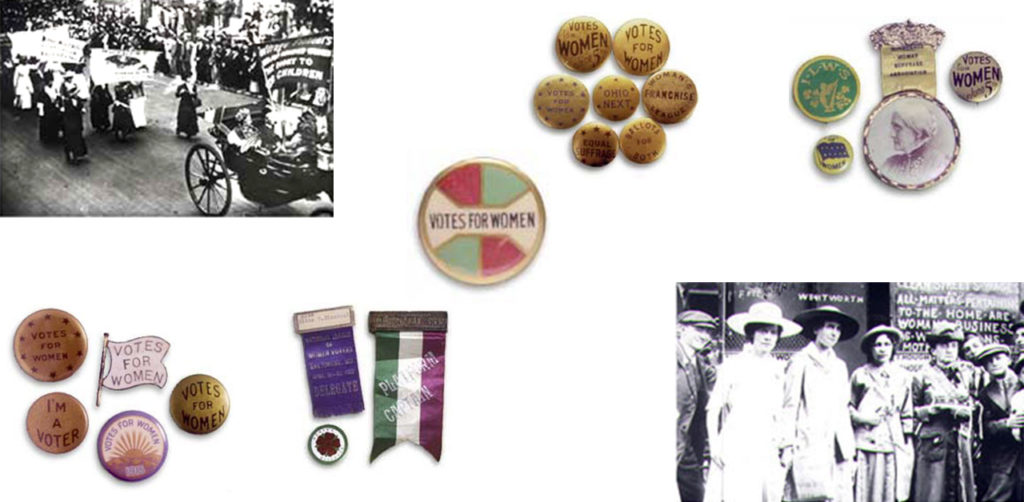
Learn more about the Suffrage movement
Inez Milholland – Champion of Suffrage
Femininity in Question: Edwardian Depictions of the New Woman

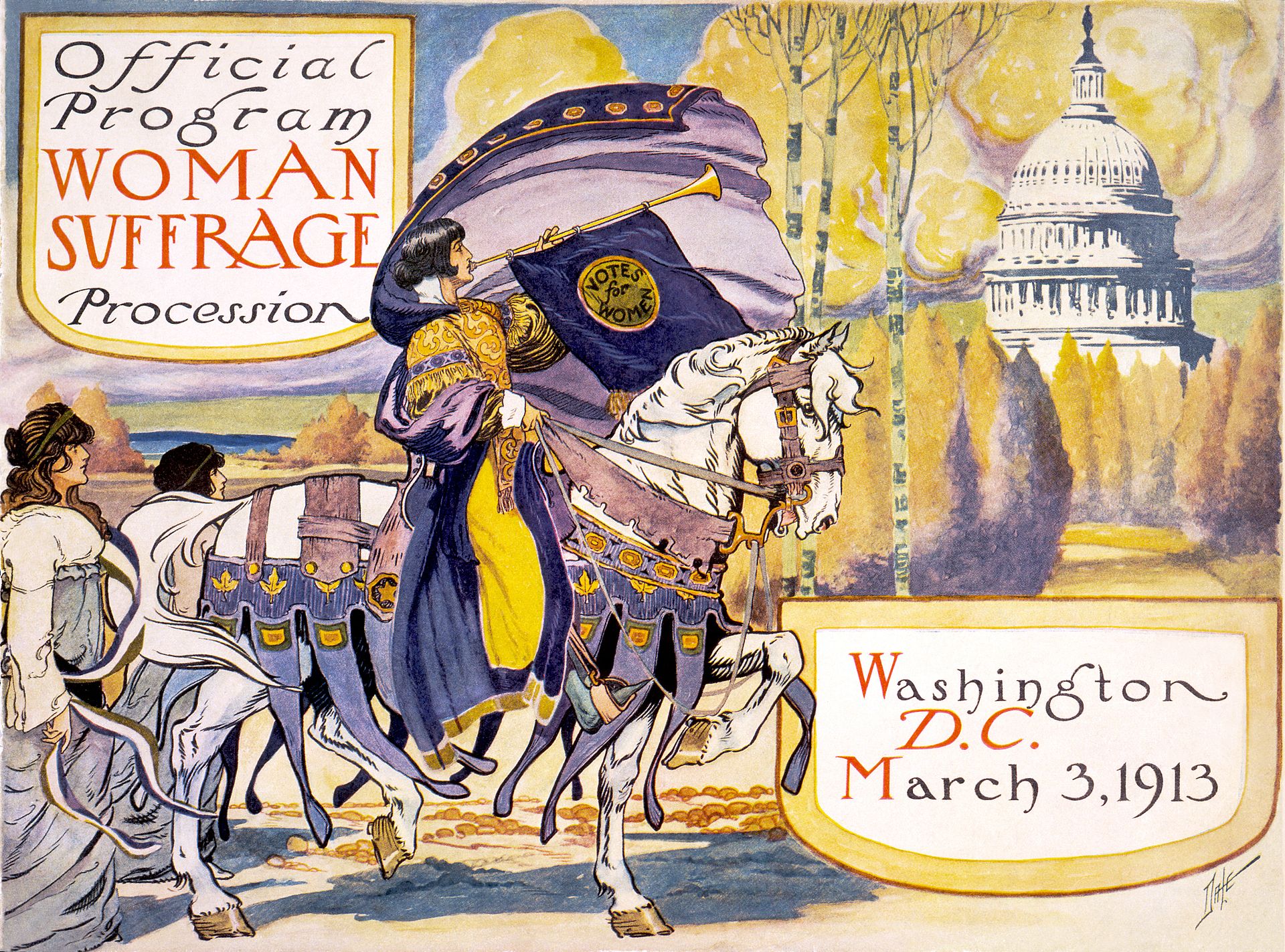
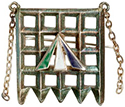

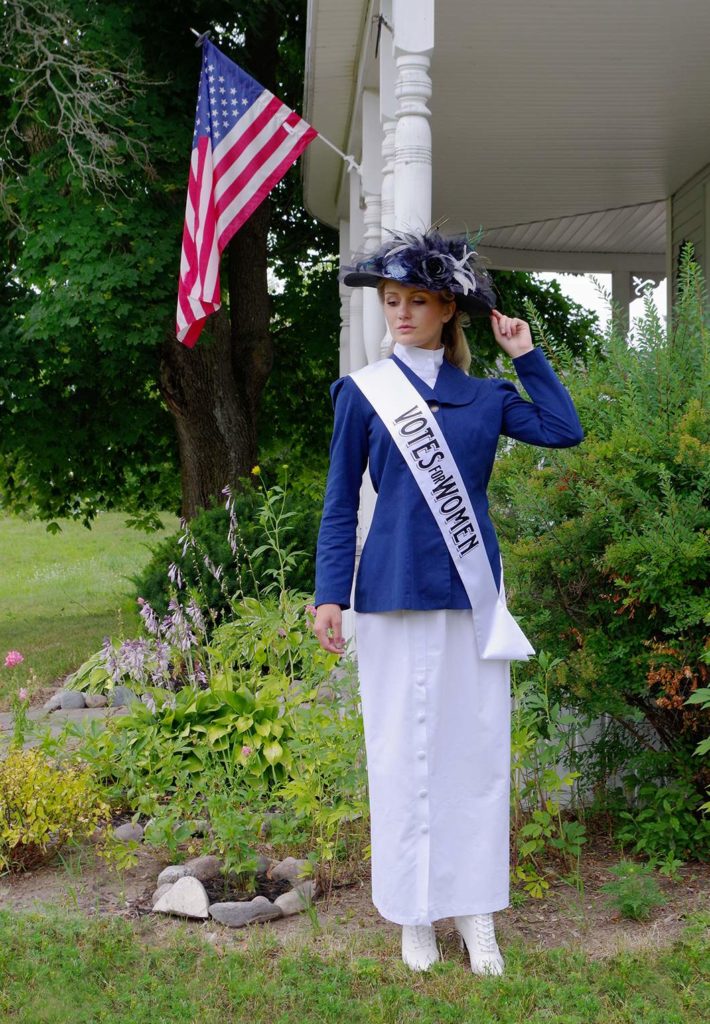







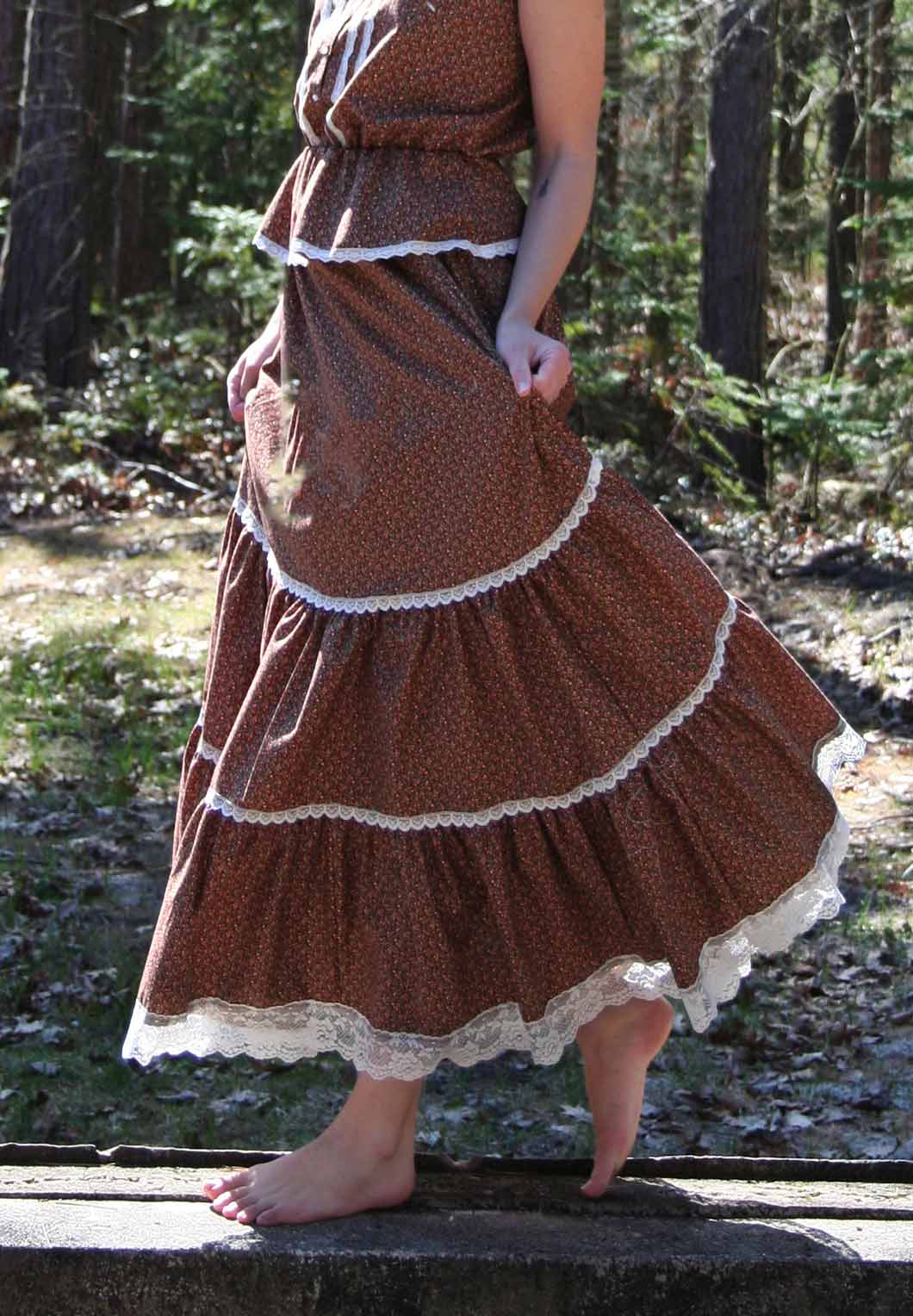
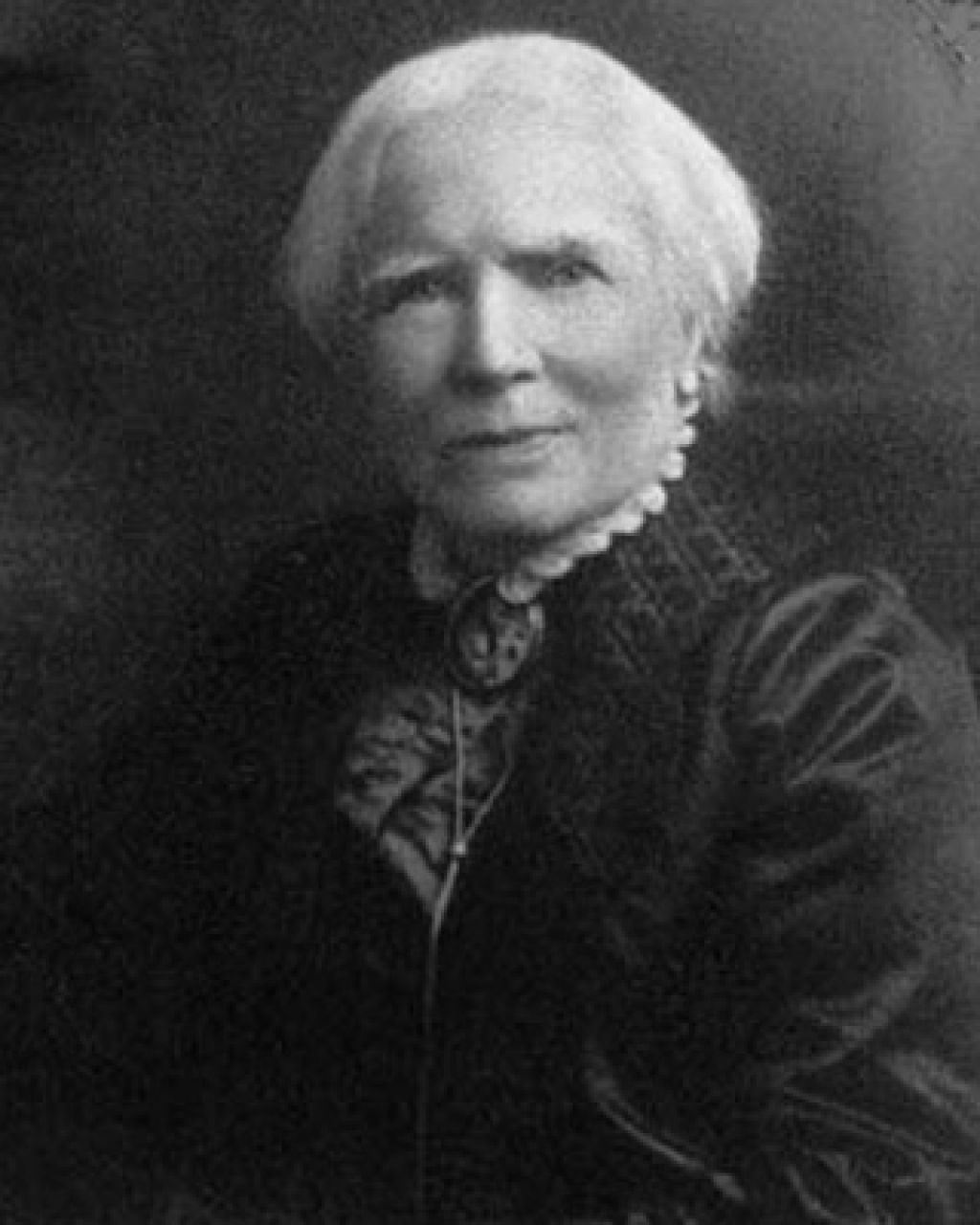
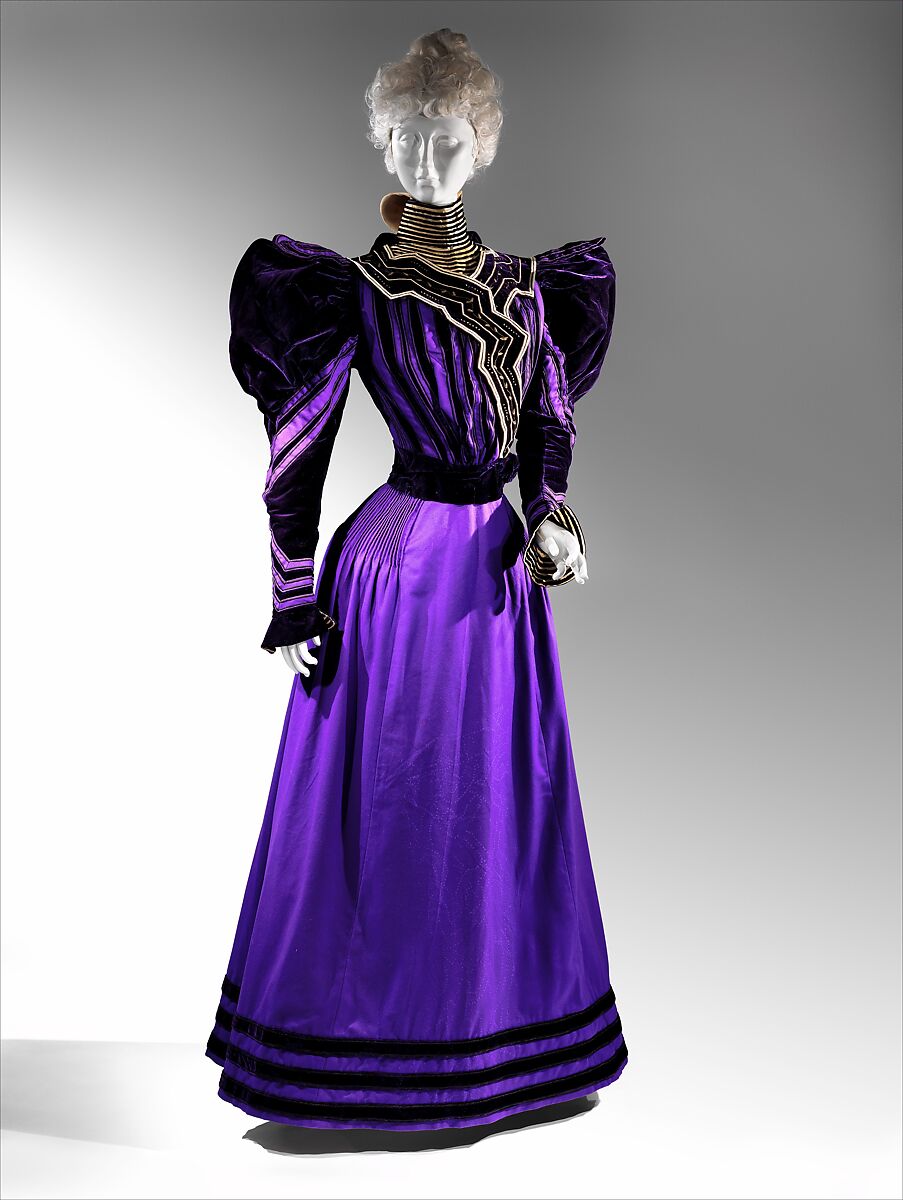

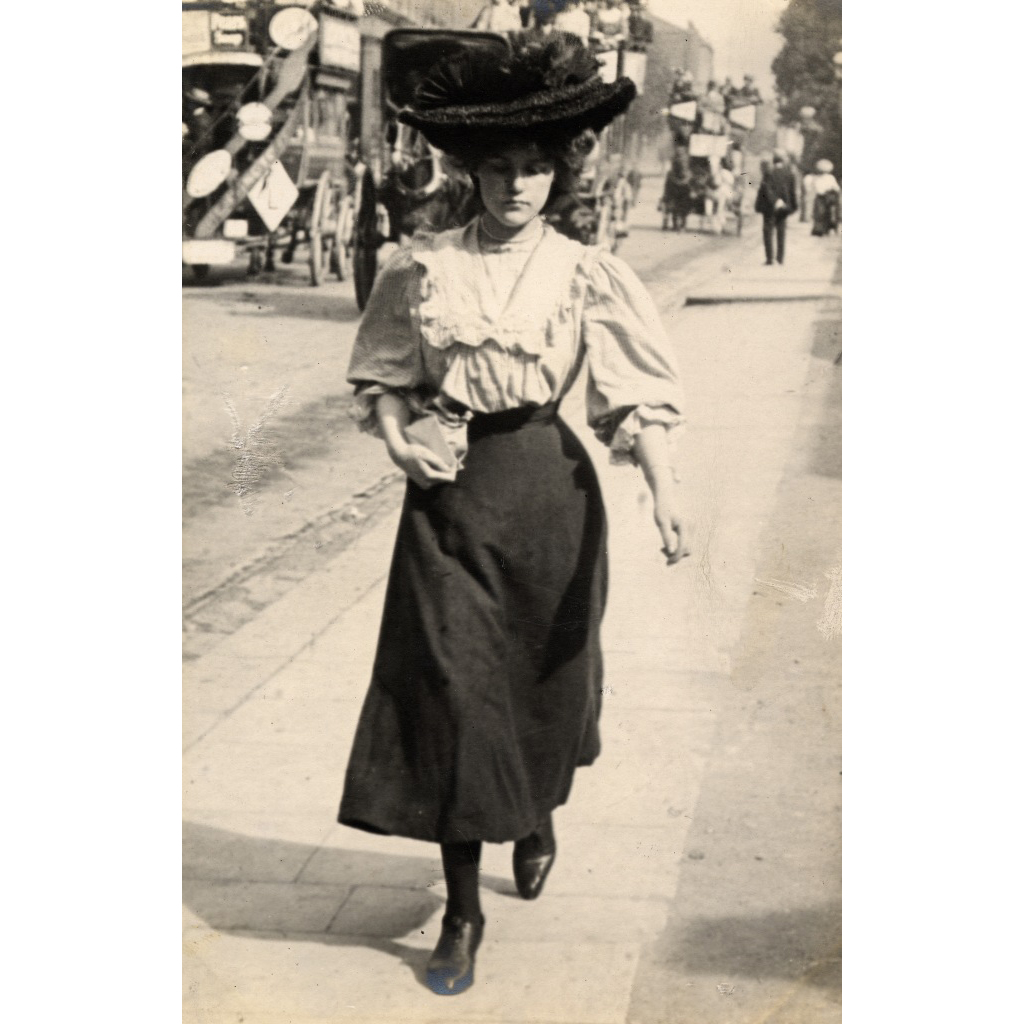
Good question! Maybe someone will tell us.
Is the original flag that Alice Paul made still archived or displayed somewhere? I hope it’s not lost to the ages!
[…] of Women’s Suffrage – Recollections Blog. [online] Recollections Blog. Available at: https://recollections.biz/blog/colors-womens-suffrage/ [Accessed 2 May 2019](Klein and Klein, […]
[…] of Women’s Suffrage – Recollections Blog. [online] Recollections Blog. Available at: https://recollections.biz/blog/colors-womens-suffrage/ [Accessed 2 May 2019](Klein and Klein, […]
Hi, Kea. Here’s why green, white, and purple. Emmeline Pethick-Lawrence, editor of Votes for Women, a weekly newspaper, explained “Purple, as everyone knows is the royal colour, it stands for the royal blood that flows in the veins of every suffragette, the instinct of freedom and dignity… white stands for purity in private and public life… green is the colour of hope and the emblem of spring.” (The Colours of the Suffragettes)
Why green white and purple??????
Thank you!
Thanks on your marvelous posting! I truly enjoyed reading it, you happen to be a great author.
I will be sure to bookmark your blog and will come back at some point.
I want to encourage you continue your great posts, have a nice morning!
[…] and with a suffragette theme beckoning I had to think, fast. Apparently, there was more than one colour scheme for the women’s suffrage movement – the more well-known in the UK being purple (denotes the royal blood in the vein of every […]
There’s certainly a lot to know about this topic. I really like all
of the points you have made.
Replicas of the National Woman’s Party jail door brooch are available through the Alice Paul Institute and the Belmont-Paul Women’s Equality National Monument museum.
Purple, gold, and white were the colors of the NWP, not the larger mainstream NAWSA. Gold and white were most widely used.
[…] [10] The Suffragist, Vol. 1 No. 4, published on December 6, 1913. http://recollections.biz/blog/colors-womens-suffrage/ […]
Are there replicas available for purchase of the “jail for freedom:” pin?